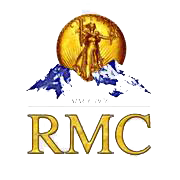Colorado has many perks, from its beautiful scenery and top-notch ski resorts to the relatively low cost of living. But apart from offering a host of benefits to its residents, Colorado also plays an important national role: it’s one of the top gold-producing states in America.
Colorado’s rich history of gold and silver mining goes back centuries. Below, we’ll tell you a bit about this crucial part of Colorado’s history and discuss how Colorado’s precious metal stores continue to positively impact the US-and can benefit you today.
The Colorado Mineral Belt
Most of Colorado’s gold and silver comes from an area known as the Colorado Mineral Belt. This 300-mile long stretch of rich ore deposits is about 50 miles wide. It moves northeast across the state from the San Juan Mountains to the Colorado Front Range. You’ll find most of the state’s historic mining towns within this stretch, with the notable exception of the productive mine in Cripple Creek.
From 1860 to 1990, miners extracted 7.3 million troy ounces of gold from the region. Altogether, including gold extractions from Cripple Creek and other lucrative mines, 45 million troy ounces of gold have come from Colorado’s productive gold mines over the last 150 years.
As for silver production, the Leadville mining district, located within the Colorado Mineral Belt, produced 240 million troy ounces of silver during its operation.
Along with gold and silver, prospectors and miners also found lead, zinc, copper, and other lucrative minerals in the region.
The Colorado Gold Rush
You’ve heard of the California ’49ers, but what about the Colorado ’59ers? A decade after the famous California Gold Rush, the Colorado Gold Rush (also known as the Pike’s Peak Gold Rush) burst to life, attracting many prospectors who were tired of working hard with few results in California.
In fact, around 100,000 prospectors moved to Colorado during the Gold Rush. Together, they formed the first large settlement of European-American settlers in the area. Although many of these settlers moved on after a decade or so, the huge influx of residents led the United States to form the Colorado Territory a few years after the initial rush. (Previously, Colorado was part of the Kansas Territory.)
Although a few travelers had found gold while they traveled through Colorado, none had found a large deposit until 1858. William Green Russell and his party of around 100 travelers located the gold with the help of his Cherokee wife and other Cherokee contacts, who had previously found small gold deposits in the region.
The group made the first major discovery of gold in the Rocky Mountain area at Little Dry Creek, where they extracted nearly 20 troy ounces of gold. From this small discovery came the largest gold rush in United States’ history. It gave rise to towns like Boulder and Denver, and ultimately resulted in Colorado’s statehood in 1876.
Just as the gold prospects in the Colorado Mineral Belt started to dry up, the Cripple Creek mine opened.
Since 1893, miners have extracted 23 million troy ounces of gold from Cripple Creek alone. The Cripple Creek gold mine is the only gold mine still in operation in Colorado today.
The Colorado Silver Boom
While gold was the primary draw for settlers in the 1850’s, panning and mining for gold eventually led to another important discovery: the wealth of silver in the area. The initial silver boom came exactly 20 years after the Colorado Gold Rush and started in Leadville, as mentioned above.
The 1879 Silver Boom was made possible by the Bland-Allison Act, passed in 1878. This Congressional act allowed the US government to purchase silver to mint silver dollars. This act made silver mining very profitable-at least until the government repealed the act in 1893. As a result, silver prices spiraled down and ended the boom.
Today, as with gold, the Cripple Creek mine is still Colorado’s largest producer of silver. According to the company’s 2015 newsletter, they produced 210,921 troy ounces of gold and 110,383 troy ounces of silver in 2014.
How You Can Benefit From Colorado’s Rich History
If you live in Colorado, you’ve already enjoyed the benefits of the state’s gold and silver booms. Mining and energy continue to drive Colorado’s large economies. And in mid-2015, Colorado’s economy was growing faster than the nation’s economy, due in part to its stable natural resources and mining sectors.
But if you want to get more actively involved in Colorado’s gold and silver mining history, you have a few fun options:
- Visit a historic gold or silver mine to tour tunnels and mining towns.
- Get a taste of the historic gold mining experience by panning for gold. You’re allowed to pan on most public property, though panning is banned along portions of the Arkansas River.
- If you’re a treasure hunter, visit some key treasure-hunting sites in the Rocky Mountains. Who knows what you and your metal detector could find in one of Colorado’s many ghost mining towns?
Now that you know more about Colorado’s history, are you interested in learning more about gold and silver in Colorado or their value on the current US market? Revisit our blog frequently for updates.




